Tor Bella Monaca bar owner has seen it all in his 20 years
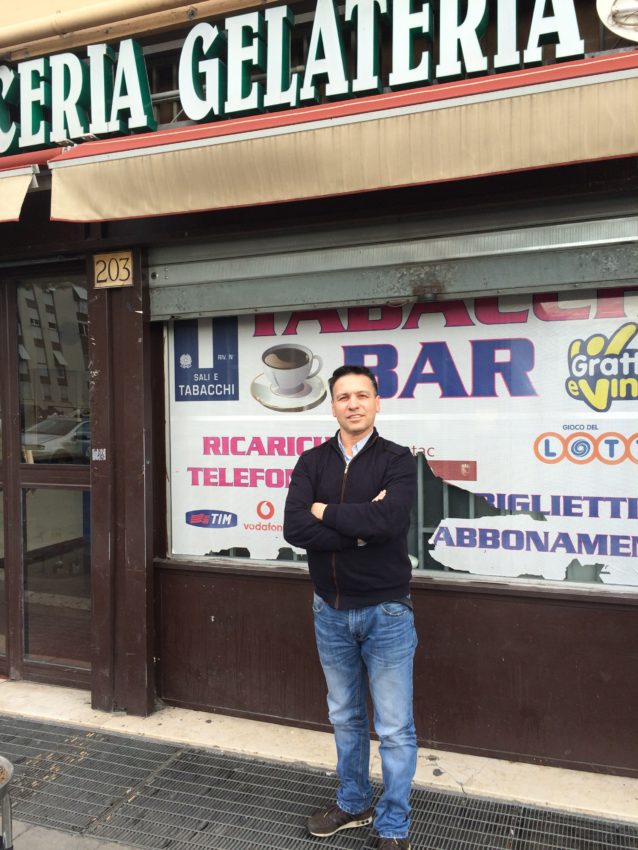
PART TWO OF A THREE-PART SERIES
Via dell’Archeologia stretches along five of the most dangerous blocks in Rome. On one side is a series of drab, gray, seven-story apartment houses. On the other are 15-story apartment towers, yellowing like last year’s newspaper. The buildings could be in any lower middle-class neighborhood in the world, except for one element.
You’ll find it in the back of the buildings. Or it’ll be below. It’s away from foot and car traffic, away from eyes that, in this neighborhood called Tor Bella Monaca, are usually averted.
“NOOOOO! I don’t go behind there,” says Rocco Sansotta who owns a bar in Tor Bella Monaca. “It’s like the Bronx. They say, ‘You don’t go there.’ I don’t go there. They say, ‘You don’t go back there. You don’t go underneath the garages.’
“I hear stories.”
Rocco Sansotta said he has never been behind those buildings. Rocco Sansotta has owned a bar two blocks away … for 20 years.
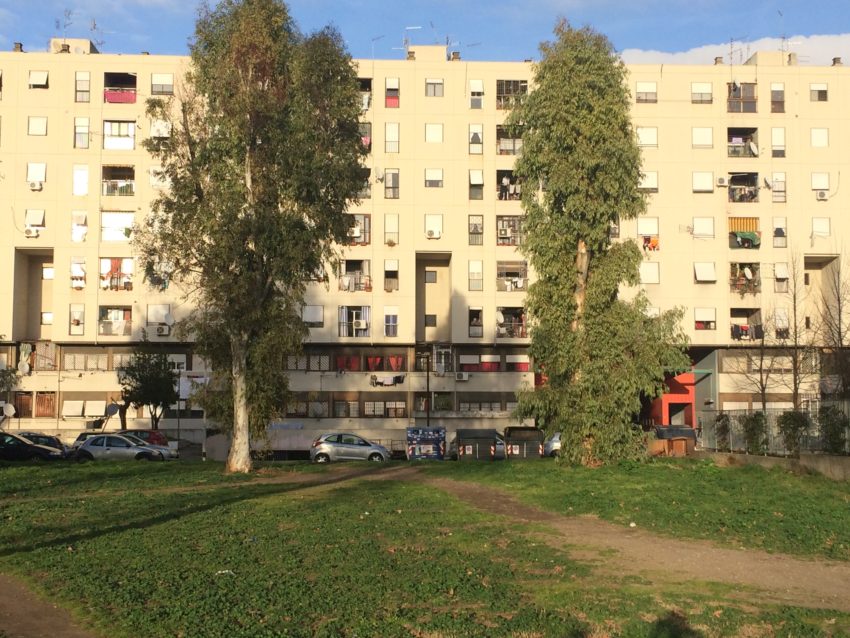
Sansotta moved to Rome in 1986, during a decade of strong economic growth in Italy. Auto sales hit an all-time high. Wine production had improved and exploded on the world market. The lire was relatively strong. Tor Bella Monaca, however, was growing into a cesspool of low-income desperation. One of the few neighborhoods with state-funded housing had attracted a drug culture that turned Tor Bella Monaca, known as The Black Hole of Rome, into perhaps the most dangerous neighborhood in the city.
Keep in mind, “dangerous” has a different meaning in Rome than in U.S. cities. In 2014, Rome, a city of 2.6 million people, had only 40 murders, according to Rome police statistics. Chicago, about the same size, had 407. That year only 468 murders occurred in all of Italy. In the U.S., according to the FBI, 33,169 died in the U.S. by guns alone in 2013 (21,175 by suicide). Of the 40 murders in Rome two years ago, however, 23 occurred in the southeast periphery that includes Tor Bella Monaca.
Pickpockets? That’s a different story. Two years ago Rome had 31,202 pickpockets, making it No. 2 in the world behind Barcelona. That’s REPORTED pickpockets.
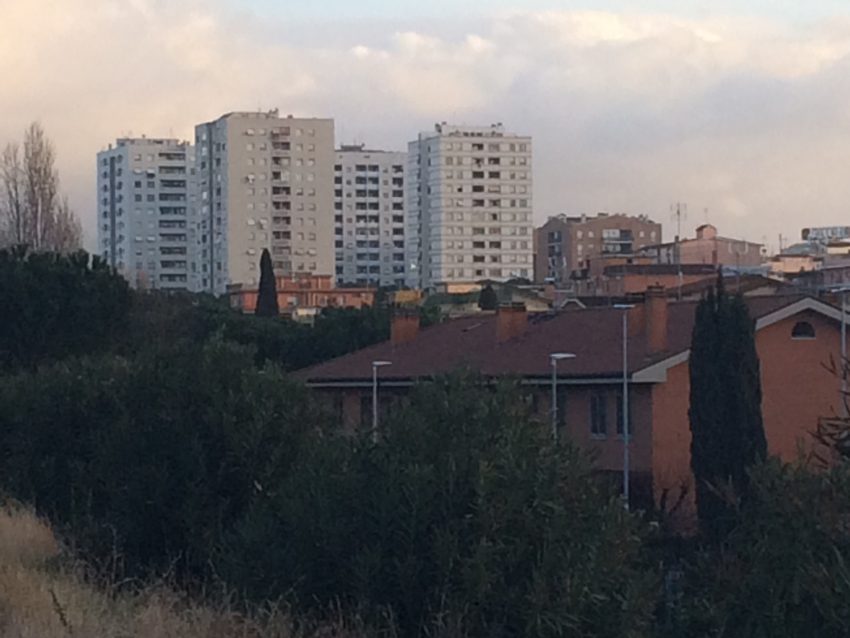
Sansotta has a different perspective than most. He’s Canadian. His father, Rocco Sr., is a native of Calabria, the toe of Italy’s boot. He moved to London, Ontario, in 1959 and then to Rome in 1980 to be a bricklayer. His wife joined him the next year. Their son arrived in 1986 when his father opened the bar. Rocco Jr. was 26. For the past 30 years he has lived in Torre Angela and Borghesiana, adjacent neighborhoods that are equally scruffy but not nearly as dangerous.
He took over the bar, called Bar Pasticceria, from his father in 1996. It serves as Tor Bella Monaca’s nerve center. It’s where locals sit in folding chairs and drink bottles of Peroni beer. Strung-out junkies and those on the rebound wander in to hang on to any support group still lingering. Prostitutes, some of them actually women, come in off work when it opens at 6 a.m. and buy cigarettes.
The bar is airy and clean and efficient. They serve a nice caffe schiumato and some delicious desserts. His sister, Maria, is serving espressos to some middle-aged men in old coats when Rocco sits down at a small table and talks to me about life in the neighborhood that scares Romans like no other. A beautiful but hardened woman with long blonde hair, skin-tight jeans and fashionable high-heeled boots sips a bottle of beer by the bar. It’s 3:30 in the afternoon.
I ask Sansotta how many people have been killed in Tor Bella Monaca recently.
“I don’t know, but there are always problems,” he says. “The police, they don’t do their job. Because they might be scared.”
Sansotta has the air of a local statesman. He turns 54 Monday but his wrinkle-free face, full head of short-cropped hair and fit physique make him look more like an ex-hockey player than someone who has maintained a bar in a near war zone for 20 years. He lives five minutes away on Via Casilina, a long artery that has also seen its share of blood. But Sansotta spends most of his time in the bar. He maintains order, in no small part due to his father who was a revered figure in the neighborhood.
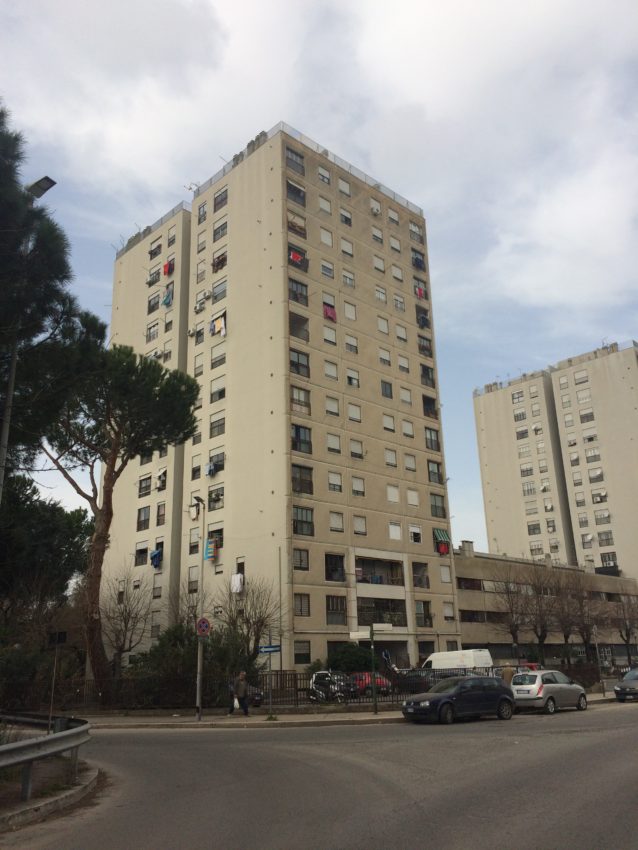
But Rocco Jr. has seen so much. There was the time two years ago when a woman went door to door in a tower a block away on Archeologia, frantically pounding for help. Her drug-crazed boyfriend was going to harm her, she screamed. No one opened a door. Her boyfriend, apparently upset she refused to buy him anymore drugs, dragged her to the roof of the 15-story building. He threw her off.
“Maybe she was done,” Sansotta says. “When I say she was ‘done,’ I mean she was under chemicals.”
I ask what happened to the guy. He says the man is back living in the same building.
“He’s out already,” Sansotta says. “He spent two or three years and they took him out. If you’re on drugs or taking chemicals, they let you off easily because they say you don’t know what you’re doing. You need help.”
Then there was the time in 2014 year when 17-year-old Federico Caranzetti was found shot dead, execution style, in the face, twice. He had a dispute over a drug deal.
Drugs run through the veins of Tor Bella Monaca lives like a poisoned tidal wave. According to Linkiesta, the Italian news website, Tor Bella Monaca reports 150 overdoses a year. In 2007, the Italian Red Cross Villa Maraini program came 10 times a month to give the antidote Naloxone to heroin overdose victims.
Linkiesta quoted a 10-year-old boy who kept going to sleep in a local elementary school. He apologized to the teacher because, he said, “Last night I did not sleep. I helped Mom and Dad do the sugar sachets.”
“Sugar sachets” have nothing to do with sugar.
***
A big difference between Rome and U.S. cities is Rome has no turf wars. Mafia families, sitting in mansions outside the neighborhood, have their hands in the drug trade. It’s not run by trigger-happy street gangs shooting anyone they don’t recognize. Guns are illegal in Italy and are only obtained through an underground marketplace. However, it’s best to not disturb the locals.
Sansotta remembers one time when a man obviously not from the neighborhood was having a beer with his brother.
“He was from Morocco,” he says. “I don’t know what happened. He must’ve touched one of these guys from another zone. His brother took off. He was leaving and he opened the door and there were a lot of people outside. He said, ‘I’m not going out there. These guys are going to kill me.’
“I said, ‘If you don’t go out, they’re going to wreck my bar.’ So to save his life, I called the Carabinieri.”
Sansotta now has bulletproof windows and video cameras.
“Each stone they throw,” he says, “I see smoke coming out.”
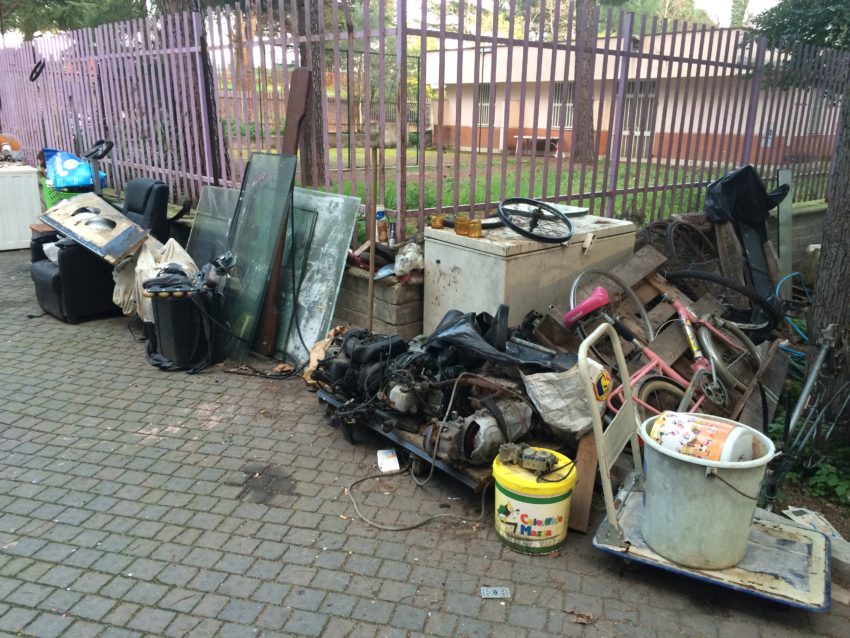
While he talks, a middle-aged man with hair that hasn’t seen a brush in a month and has somewhat of a dis-attached, glassy look in his eye, is asked to move his chair by an older man who’s not kind in his request. The crazed man looks even more crazed now. I find myself not listening to Sansotta and bracing for an incident. Fortunately, nothing happens and the man walks away, looking thoroughly pissed and even more wild eyed.
I’m told later he’s a former addict and ex-con who never quite recovered. Sometimes Sansotta gives the struggling a few coffee or other freebies. They are aums in Tor Bella Monaca.
“You give them a hand,” he says, “but not an arm.”
I ask Sansotta what his biggest problem is.
“Really nothing,” he says. “If you mind your own business, you don’t worry. There are no problems for you. But there’s always two or three people who walk around in the zone and do what they want. They might be good people but when they drink or do drugs they start doing bad things to people. They beat the crap out of you if you touch their car.”
I don’t feel terribly threatened in the bar. It’s getting late afternoon and becoming more crowded. But the crowd could pass for a working-class crowd in my Testaccio neighborhood. I’ve felt more intimidated in bars in Las Vegas. Still, I don’t know these people. Police have shut down Sansotta’s bar twice.
“They said, ‘We have to close your bar for 30 days,’” he says. “‘What’s the reason?’ We had so much debt back then. ‘Well, three times we found pregiudicati (ex-cons) in your bar. ‘I know and I’ve heard 90 percent of the people in this zone are pregiudicati.’
“They go, ‘I’m sorry but you’re a good person and I know you have a good family but you have a bar in a zone that’s very bad.’”
If they close it three times, they take away his license.
“Now I have to watch our people,” Sansotta says.
It’s one of the reasons why he’s trying to sell the bar. “I’m tired,” he says. “I want to try a smaller bar. Anywhere. Maybe in the center.”
You have 250,000 euros? Buy a bar that Sansotta says makes 25,000 a week. Of course, you only get 10 percent. The rest goes to the government. But it does make money. Your initial reaction to Tor Bella Monaca won’t be bad. I walk around during the afternoon and see middle-aged working women carrying in groceries from their apartment house parking lot. I see old men on park benches. I see a nice fitness center. A big grocery store is buzzing with families. The tenants don’t look any more menacing than they do in my neighborhood.
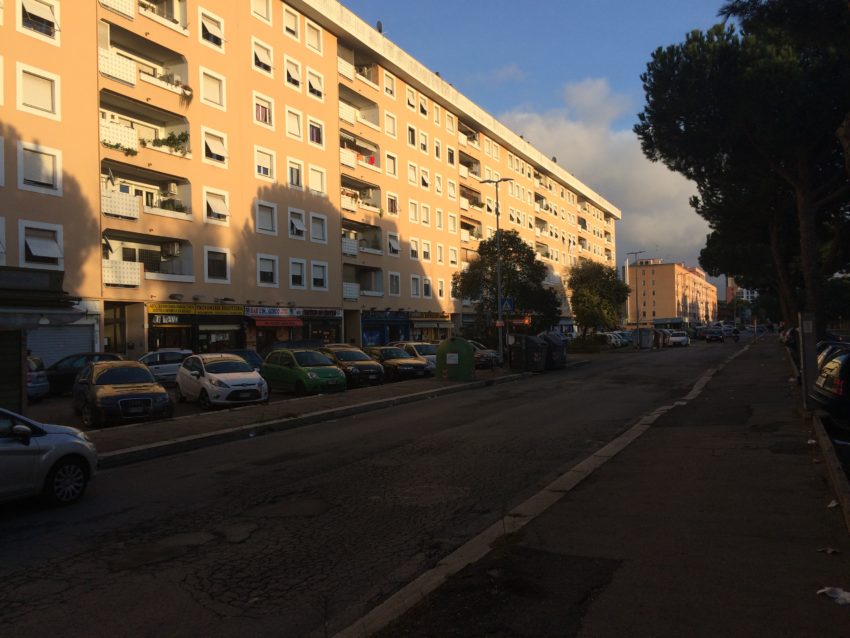
I’ve walked around South Bronx and South Central Los Angeles and the projects of New Orleans and always looked over my back. Here, I felt downright comfortable and it wasn’t the mild winter temperature.

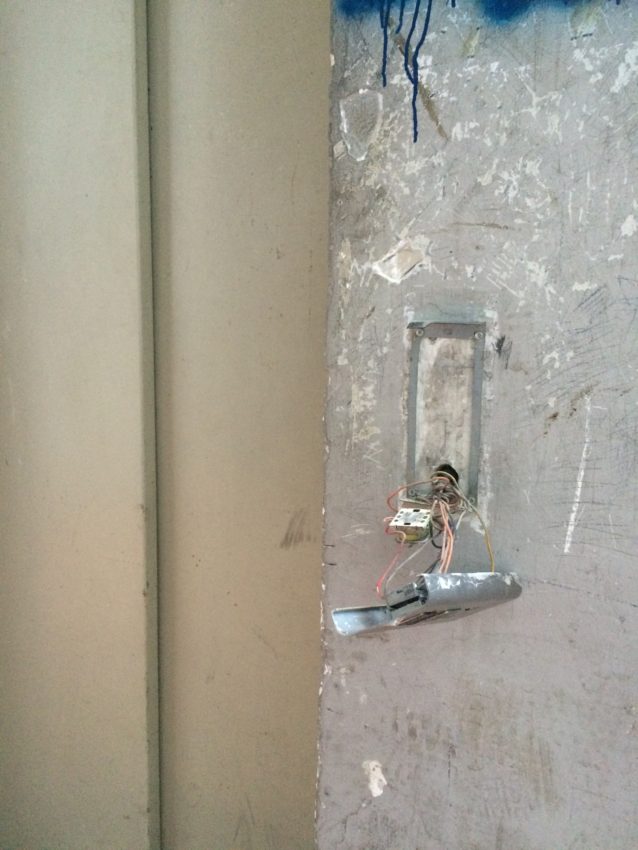
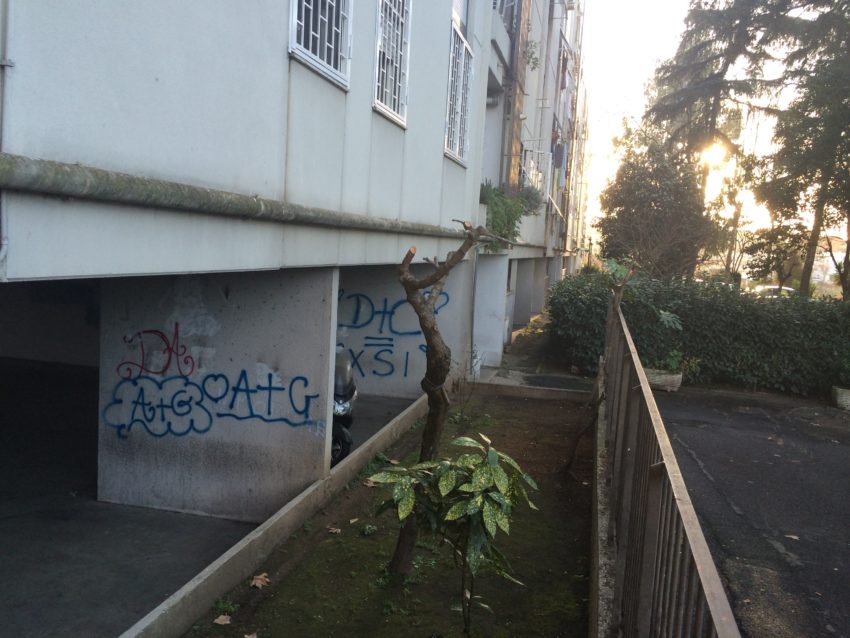
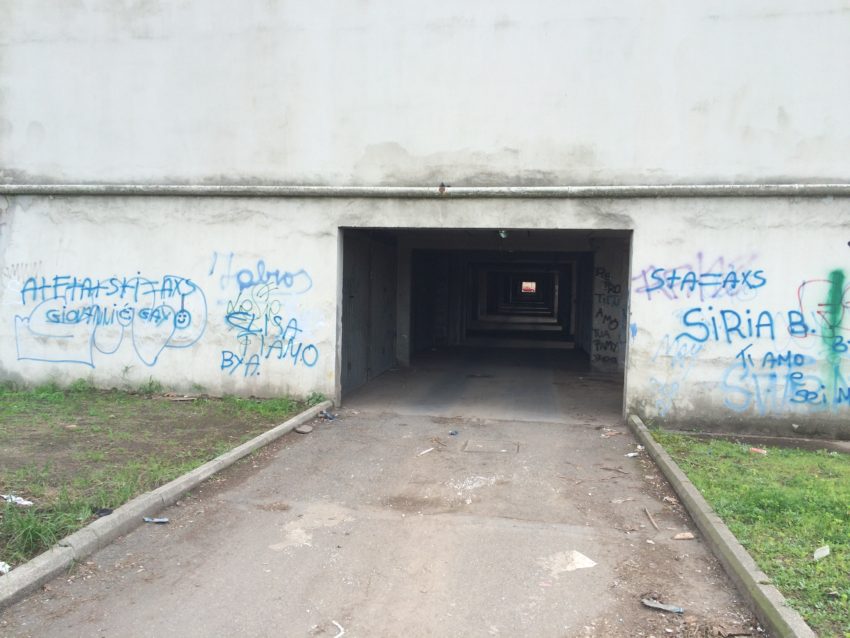
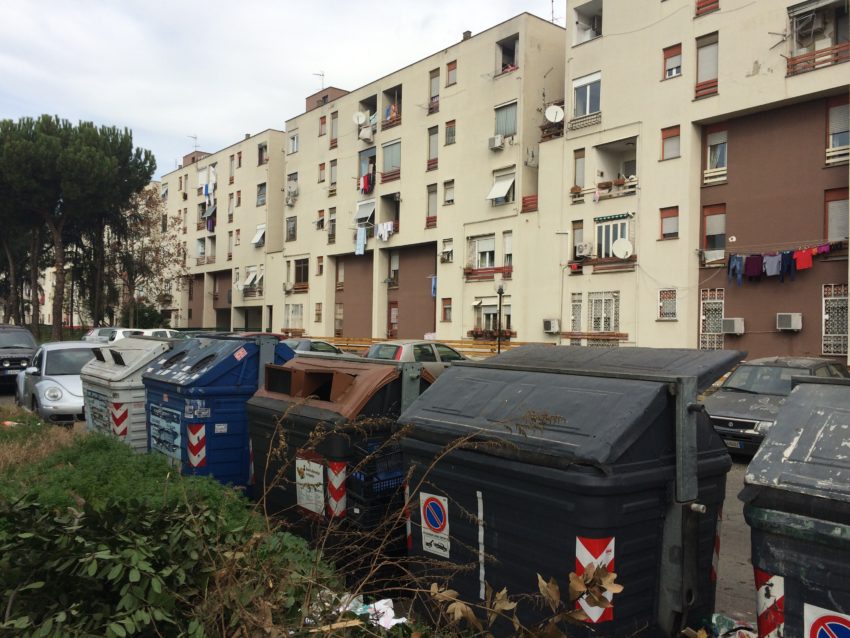
Hanging out in the bar every day is one Carlo De Santis. The former drug dealer spent 15 years in nine different prisons before finally freeing himself from the business. He now lives on a government pension of 280 euros a month.
“Tor Bella Monaca is different in the sense that, like in Laurentina (a neighborhood with a relatively bad reputation in southern Rome), the kids, they get married and go away from that area,” he says. “When the kids here grow up they get married but don’t go away. They stay here so the problems keep happening.
“The problem here is wages are low. The kids just stay here and they don’t have an education. So it just gets worse. All they do is look to steal money and do crimes to get money. It just keeps rolling over.”
There’s no question it’s dangerous here even for police. In July, protesters set upon police who detained two suspected pushers. Four policemen wound up injured. After that, a wave of 150 police came pouring into Tor Bella Monaca. They demanded ID from every person who entered the buildings. One bust found 106 kilos of marijuana in a car.
“The Carabinieri and police were everywhere,” Sansotta says. “There were helicopters. They stopped everybody. Even if you were walking on the street they stopped you.”
Some people, however, they just can’t stop. Three days after Sansotta and I talked, he was robbed.
***
I’m sitting at home doing emails when I receive a call from Robert Della Vedova, my Australian-Italian friend who lived six months in Tor Bella Monaca two years ago. He hung out at Bar Pasticceria and is friends with Sansotta. Something has happened to him. He says someone rammed his car through the front of the bar and stole the cash box. I turn off my computer and tell Della Vedova I’ll meet him at the bar. I take a bus to Termini train station and the No. 20 bus 40 minutes east to Via Tor Bella Monaca. When I arrive, I see workers measuring the shattered giant window that serves as part of the bar’s front door. The car even managed to get past the foot-high concrete spikes that protect the storefront.

I walk in and see Sansotta serving coffee. He points to an area near one of the video games. The cash box was there with between 200-1,000 euros. The window will cost him at least 2,000 euros. Insurance only covers part of it. It’s the third time he’s been robbed in six years.
He said it may be one of a string of robberies they did that night. He says four or five robberies similar to this will net about 5,000 euros — or a few years in prison. Desperation comes cheap in Tor Bella Monaca.
“I don’t think they’re from here,” Sansotta says. “They come here, they look around and the last week, I kind of suspected a couple people. They were staring at the machines, standing around, looking around.
Then he shrugs and offers a wan smile. I tell him he’s taking this rather well.
“I’m so used to it,” he says. “I’m more pissed off because of the damage. This is my third time. In the beginning I was more pissed off. Now I’m so calm. I’m mad because police aren’t here as much a they should be.”
However, Sansotta says police can still be seen checking people’s IDs. Also, Rome police spokeswoman Lucia Muscari says police commissioner Nicolo D’Angelo has placed a special emphasis on Rome’s periphery. Tor Bella Monaca is only one of many areas with problems. Pigneto. San Basilio. Corviale. Prenestina. All have a major drug presence.
In other words, just say no.
“Roma is more safe perhaps because there aren’t neighborhoods where you can enter and have fear that you’ll get shot,” Muscari says. “But there are places where they sell drugs.”
NEXT: MEET THE FORMER DEALER WHO SPENT 15 YEARS IN NINE PRISONS

